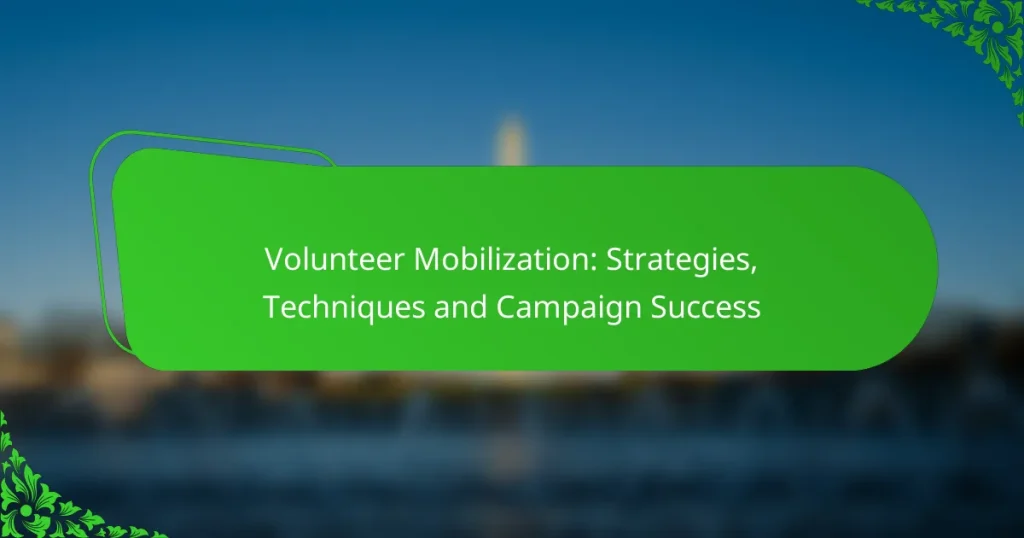
Volunteer Mobilization: Strategies, Techniques and Campaign Success
Volunteer mobilization is essential for driving community engagement and enhancing participation in meaningful causes. By…
Political activism plays a vital role in shaping societal change and influencing policy. By employing strategies such as grassroots organizing, digital campaigning, and coalition building, activists can effectively engage communities and amplify their voices. Utilizing social media and local networks enhances these efforts, allowing for rapid information sharing and mobilization of support around shared concerns.
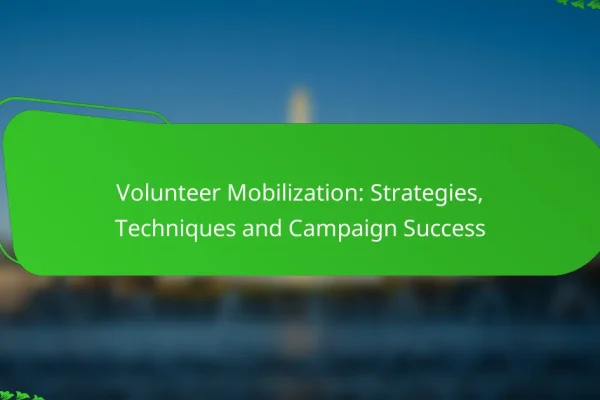
Volunteer mobilization is essential for driving community engagement and enhancing participation in meaningful causes. By employing effective strategies and utilizing the right tools, organizations can create impactful campaigns that not only attract volunteers but also foster a sense of belonging and purpose among them. A structured approach to mobilization can significantly amplify the success of…
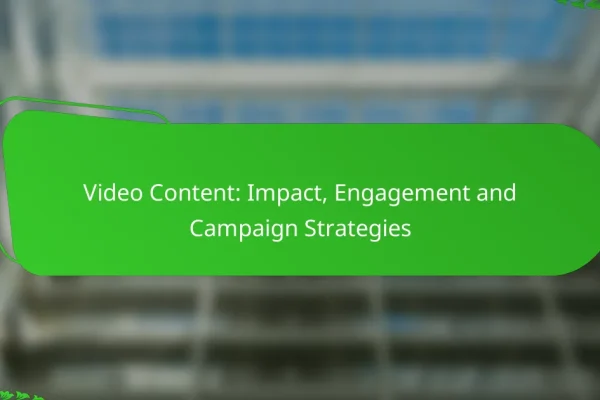
Video content plays a crucial role in enhancing audience engagement by effectively capturing attention through its dynamic combination of visual and auditory elements. By employing targeted distribution and interactive features, well-crafted video campaign strategies can significantly improve viewer retention and conversion rates. To gauge the effectiveness of video content, it’s essential to analyze engagement metrics,…
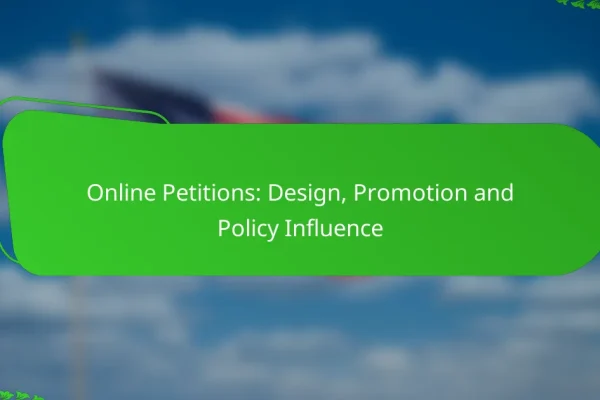
Online petitions serve as powerful tools for advocacy, enabling individuals and organizations to mobilize support for various causes. By focusing on clear objectives, engaging visuals, and user-friendly designs, these petitions can significantly increase participation and influence policy. Utilizing the right platforms and promoting campaigns through diverse digital strategies further enhances their reach and effectiveness. How…
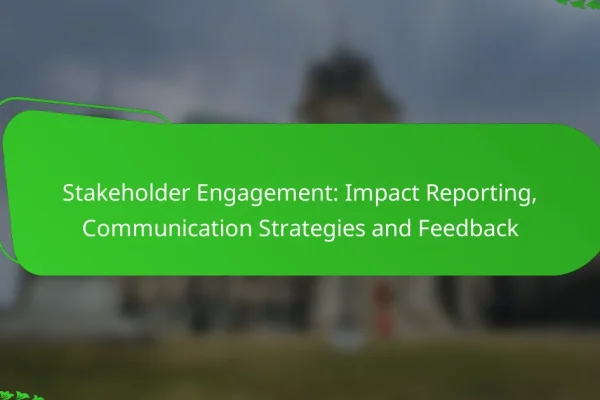
Stakeholder engagement is crucial for organizations aiming to build strong relationships and ensure that diverse voices are heard. By employing effective communication strategies for impact reporting and establishing robust feedback mechanisms, organizations can enhance transparency and trust, ultimately leading to more meaningful participation from stakeholders. How to enhance stakeholder engagement in the UK? Enhancing stakeholder…
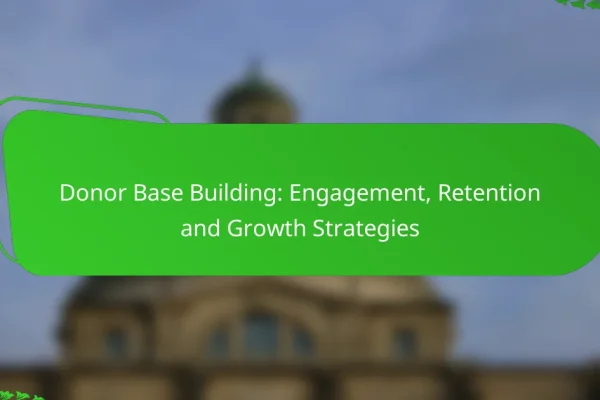
Building a robust donor base is essential for any organization seeking sustainable support. By implementing effective engagement strategies that prioritize relationship-building, personalized communication, and ongoing appreciation, organizations can enhance donor retention and foster long-term commitment. Additionally, targeted marketing and data-driven approaches can help expand the donor base, ensuring continued growth and support for the mission….
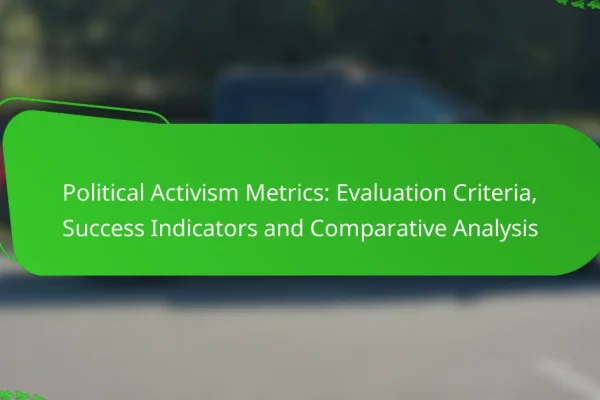
Political activism plays a crucial role in shaping societal change, and evaluating its effectiveness is essential for driving impactful initiatives. Key metrics such as engagement rates, campaign reach, and voter turnout provide valuable insights into the success of these efforts. By employing structured frameworks for assessment, activists can refine their strategies and enhance their influence…
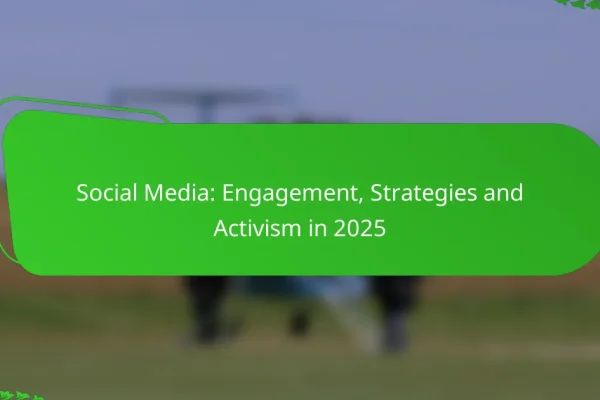
As we move into 2025, social media engagement is evolving, requiring brands to prioritize interactive and personalized experiences that resonate with their audiences. By harnessing innovative content formats and data analytics, businesses can create deeper connections and drive meaningful interactions. Additionally, social media activism is shifting towards decentralized platforms and sustainability, encouraging community-driven initiatives that…
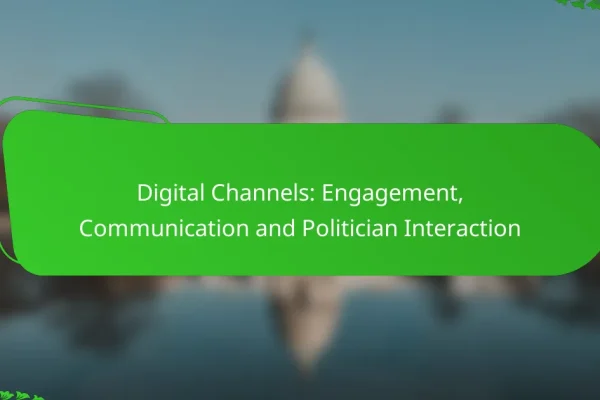
Digital channels have transformed the landscape of political engagement in the United States, enabling direct and immediate communication between elected officials and their constituents. These platforms not only facilitate real-time interaction but also empower politicians to address public concerns and disseminate information effectively. By employing personalized messaging and data-driven outreach, politicians can enhance their connection…
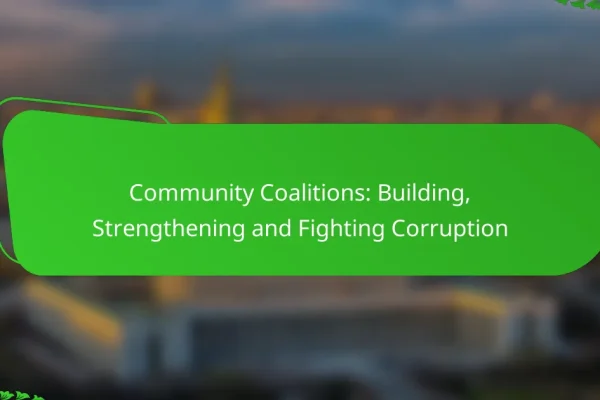
Community coalitions serve as powerful tools in the fight against corruption by bringing together diverse groups to advocate for transparency and ethical governance. By leveraging collective resources and voices, these coalitions can effectively influence policy and engage the public in meaningful anti-corruption efforts. Local governments play a vital role in supporting these initiatives, providing the…
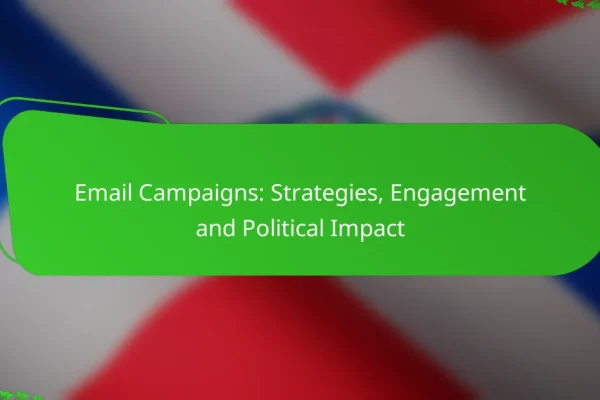
Email campaigns play a pivotal role in enhancing political engagement by enabling direct communication between candidates and voters. By employing targeted outreach strategies, these campaigns can effectively encourage participation in elections and political movements. To maximize their impact, it is essential to focus on personalization, A/B testing, and audience segmentation, alongside best practices in email…
Effective political activism strategies include grassroots organizing, digital campaigning, coalition building, public demonstrations, and lobbying efforts. These approaches empower individuals and groups to influence policy and societal change through various means of engagement and outreach.
Grassroots organizing involves mobilizing community members to advocate for political change at the local level. This strategy focuses on building relationships, raising awareness, and encouraging participation in civic activities.
Key steps include identifying community leaders, hosting meetings to discuss issues, and creating action plans that resonate with local concerns. Successful grassroots efforts often leverage social networks to amplify their message and recruit volunteers.
Digital campaigning utilizes online platforms to reach and engage a broader audience. This strategy includes social media outreach, email campaigns, and online petitions to raise awareness and drive action.
Effective digital campaigns often feature compelling visuals and clear calls to action. It's essential to tailor content to specific platforms and audiences, ensuring messages resonate with users' interests and values.
Coalition building involves forming alliances with other organizations or groups that share similar goals. This strategy enhances influence by pooling resources, expertise, and networks to tackle common issues.
To build a successful coalition, identify potential partners, establish shared objectives, and maintain open communication. Regular meetings and collaborative projects can strengthen relationships and increase collective impact.
Public demonstrations are organized events where individuals gather to express their views on specific issues. These events can raise awareness, show solidarity, and pressure decision-makers to act.
When planning a demonstration, consider factors such as location, timing, and messaging. Effective demonstrations often include speeches, signs, and media engagement to maximize visibility and impact.
Lobbying efforts involve direct interaction with policymakers to advocate for specific legislation or policies. This strategy can take various forms, including meetings, phone calls, and written communications.
Successful lobbying requires thorough research on the issues and understanding the political landscape. Building relationships with legislators and their staff is crucial, as is being clear about desired outcomes and providing relevant data to support your case.
Social media can significantly enhance activism by providing platforms for rapid information dissemination and community building. Activists can leverage these tools to mobilize support, raise awareness, and engage with a broader audience effectively.
Viral campaigns utilize catchy content that resonates with audiences, encouraging them to share widely. Successful examples often include hashtags, memes, or videos that encapsulate a cause in a relatable way. Activists should focus on creating emotionally impactful messages that can easily spread across platforms.
To maximize reach, consider timing and current events that align with the campaign. Engaging visuals and clear calls to action can further enhance the likelihood of virality.
Partnering with influencers can amplify an activist's message by tapping into their established audiences. Influencers can lend credibility and visibility to causes, making them more relatable to their followers. Choose influencers whose values align with the cause for authentic engagement.
When collaborating, provide influencers with clear guidelines and key messages to ensure consistency. Monitor the partnership's impact through engagement metrics to assess effectiveness and adjust strategies as needed.
Real-time engagement on social media allows activists to respond quickly to events and discussions, fostering a sense of immediacy. This can include live streaming events, hosting Q&A sessions, or participating in trending conversations to keep the momentum going.
Utilize tools like polls or live chats to encourage audience interaction and feedback. Being responsive not only builds community but also demonstrates commitment to the cause, which can inspire further action from followers.
Local communities are crucial in activism as they serve as the foundation for grassroots movements, enabling individuals to unite around shared concerns. By leveraging local networks, activists can effectively mobilize resources, raise awareness, and influence decision-making processes at various levels.
Community outreach programs are designed to engage residents and inform them about important social issues. These initiatives often include workshops, informational sessions, and events that encourage participation and dialogue. Effective outreach can increase awareness and foster a sense of collective responsibility among community members.
To implement a successful outreach program, consider identifying key local issues and tailoring your messaging to resonate with the community. Collaborating with local organizations can also enhance credibility and expand your reach.
Local issue advocacy focuses on specific problems affecting the community, such as housing, education, or environmental concerns. Activists can mobilize support by organizing campaigns that highlight these issues and propose actionable solutions. This targeted approach helps to create a sense of urgency and encourages community members to take part in advocacy efforts.
When advocating for local issues, it is essential to gather data and testimonials that illustrate the impact on residents. Engaging with local media can also amplify your message and attract wider attention to the cause.
Neighborhood organizing involves bringing residents together to address local challenges and build a stronger community. This can include forming committees, hosting meetings, and creating action plans to tackle specific issues. By fostering a sense of belonging, neighborhood organizing empowers individuals to take collective action.
To effectively organize a neighborhood, start by identifying key leaders and influencers within the community. Establish regular communication channels, such as newsletters or social media groups, to keep residents informed and engaged. Remember to celebrate small victories to maintain momentum and encourage ongoing participation.
Measuring the impact of activism involves assessing various metrics that reflect engagement, policy changes, and public awareness. These indicators provide insights into how effectively activism influences societal attitudes and legislative actions.
Engagement metrics track the level of participation and interaction within activist campaigns. Key indicators include social media shares, comments, event attendance, and email sign-ups. For instance, a campaign that gains thousands of shares on social media is likely reaching a broader audience.
To evaluate engagement, consider setting specific goals, such as increasing social media followers by a certain percentage or achieving a target number of event participants. Regularly reviewing these metrics helps identify successful strategies and areas needing improvement.
Policy changes are a direct reflection of activism's effectiveness in influencing legislation or regulations. Tracking the introduction or amendment of laws related to the activist cause can provide concrete evidence of impact. For example, a campaign advocating for environmental protection may lead to new regulations on emissions.
Engage with policymakers and monitor legislative sessions to stay informed about relevant changes. Documenting these shifts can strengthen future advocacy efforts by showcasing tangible results from previous activism.
Public awareness surveys gauge the general population's knowledge and attitudes towards specific issues targeted by activism. Conducting surveys before and after campaigns can reveal shifts in public perception. For instance, a survey might show increased awareness of climate change following a major environmental campaign.
When designing surveys, focus on clear, concise questions that directly relate to the activism goals. Analyzing the results can help refine messaging and strategies for future initiatives, ensuring they resonate with the intended audience.
Activists encounter various challenges that can hinder their efforts to create change. These obstacles include funding limitations, opposition tactics, and issues with media representation, each of which can significantly impact the effectiveness of their campaigns.
Funding is a critical challenge for activists, as many rely on donations, grants, or crowdfunding to support their initiatives. Limited financial resources can restrict the scope of campaigns, reduce outreach efforts, and hinder the ability to mobilize supporters effectively.
Activists should consider diversifying their funding sources to mitigate these limitations. This could involve seeking partnerships with local businesses, applying for grants from foundations, or organizing fundraising events to engage the community and raise awareness.
Activists often face organized opposition from groups that oppose their goals. These tactics can include misinformation campaigns, legal challenges, or even harassment aimed at discrediting activists and disrupting their efforts.
To counter these tactics, activists should develop clear messaging and maintain transparency in their actions. Building coalitions with other organizations can also provide additional support and resources to withstand opposition efforts.
Media representation plays a crucial role in shaping public perception of activist movements. However, activists frequently encounter biased or inaccurate portrayals that can undermine their credibility and goals.
To address media representation issues, activists should proactively engage with journalists and provide accurate information about their causes. Creating compelling narratives and utilizing social media platforms can help amplify their message and reach a broader audience.
Selecting the right strategy for political activism involves understanding your cause, audience, and available resources. Consider the impact, feasibility, and potential reach of each approach to effectively mobilize support and drive change.
Understanding your audience is crucial for effective political activism. Identify their demographics, interests, and values to tailor your message and strategy. Engaging with your audience through surveys or social media can provide insights into their preferences and concerns.
Assess the resources at your disposal, including time, funding, and manpower. A well-funded campaign may allow for large-scale events or advertisements, while grassroots efforts may rely on volunteer support and social media outreach. Prioritize strategies that align with your resource capabilities.
Selecting the appropriate communication channels can significantly influence your activism's success. Consider platforms where your audience is most active, such as social media, email newsletters, or community events. Each channel has its strengths; for instance, social media can quickly spread messages, while in-person events foster deeper connections.
Evaluate the potential impact of each strategy by considering historical examples and current trends. Strategies that have successfully mobilized similar causes can serve as a guide. Additionally, think about how your approach can create lasting change, not just immediate awareness.
Be prepared to adapt your strategy based on feedback and results. Monitor engagement levels and public response to your efforts, and be willing to pivot if something isn’t working. Flexibility can enhance your effectiveness and ensure that your activism remains relevant to your audience's needs.